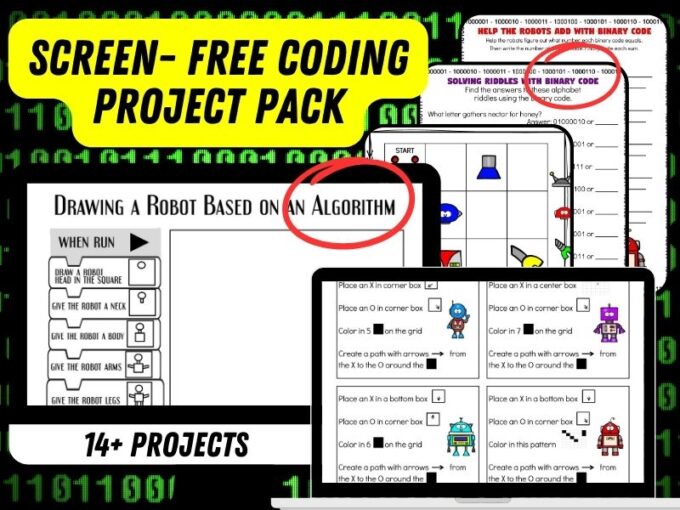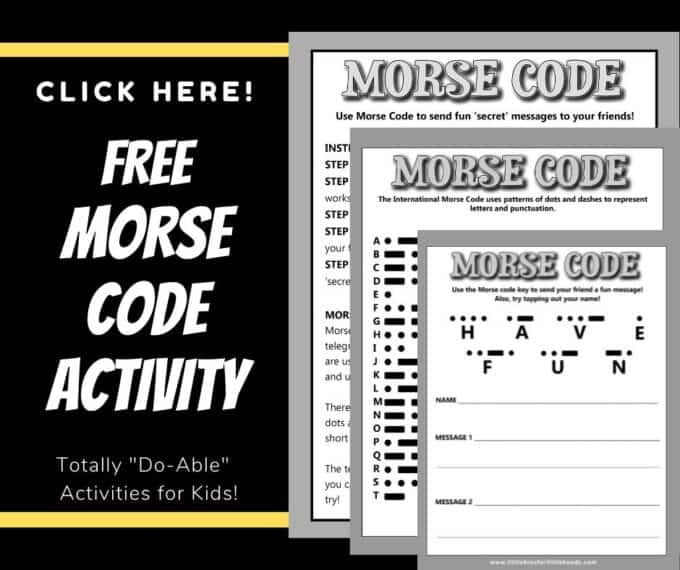Do you have a kid who’s into breaking codes, secret spies, or special agents? I do! Our Morse Code activity below is perfect for home or in the classroom, and the kids will love finding out how to send secret messages in Morse Code. Solving codes is a neat way to make STEM fun!
FUN FACTS ABOUT MORSE CODE
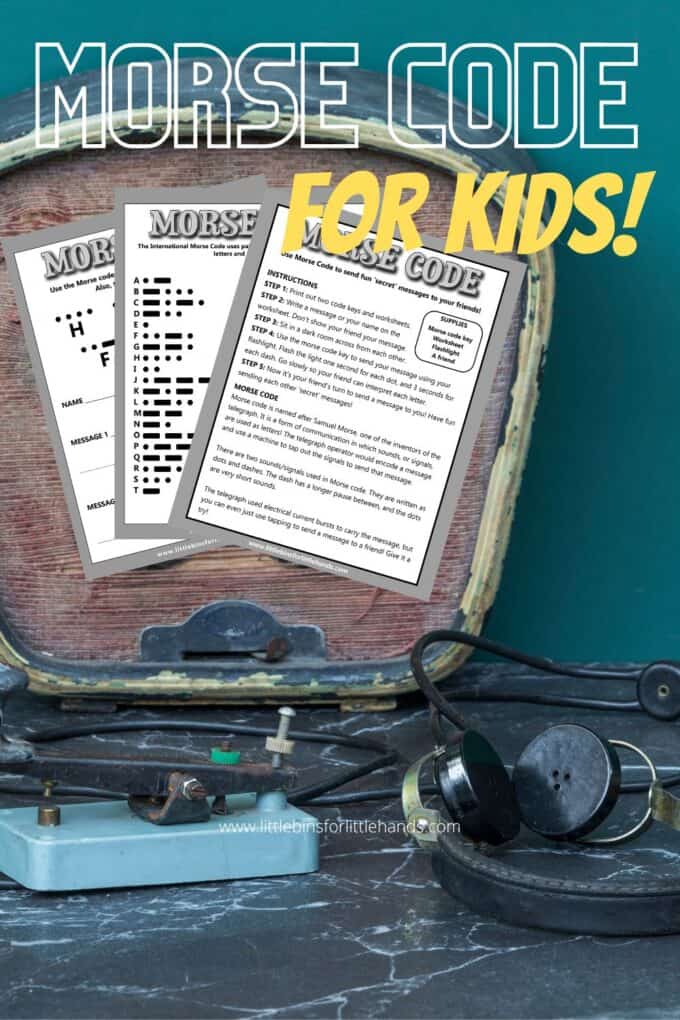
WHAT IS MORSE CODE?
Morse code is named after Samuel Morse, one of the inventors of the electrical telegraph.
A telegraph is a long-distance communication system where a message is sent via a code, rather than the physical exchange of the message. It is a form of communication in which sounds, or signals, are used as letters!
Morse code was a way to communicate a message with only electrical pulses and the silence between them. The telegraph operator would encode a message and use a machine to tap out the signals to send that message.
It was used from the 1840s to the late 20th Century, and its invention completely changed long-distance communication.
There are two sounds or signals used in Morse code, which are written as dots and dashes. The dash is a longer sound, and the dots are very short sounds.
Each letter of the alphabet is formed by a sequence of dots and dashes. There is no difference between upper and lower case letters. The length of a dash is three times that of a dot.
To make it easier, Morse code was designed so that the most frequently used letters in the alphabet have the least number of dots and dashes. For example, the letter E is one single dot.
Morse code has been in use for more than 160 years now. The Morse code used today though is very different from the Morse code that was originally developed by Samuel Morse and Alfred Vail.
The distress signal SOS is one of the most well-known signals in Morse code. It is three dots followed by three dashes, and then three dots again.
Morse code can be sent by sounds or light (like a flashlight) and is easier to learn by hearing or seeing rather than by reading. Sailors on ships can flashlight in Morse code to send messages from one ship to another.
The telegraph used electrical current bursts to carry the message, but you can use your flashlight to send a message in Morse code to a friend! Give it a try!
CLICK HERE TO GET YOUR FREE MORSE CODE WORKSHEETS!
HOW TO LEARN MORSE CODE
Morse code is fun to learn! Have a go, and don’t give up if it takes a bit of practice!
SUPPLIES:
- Morse code key and worksheet
- Flashlight
- A friend
INSTRUCTIONS:
STEP 1: Print out the two code keys and worksheet.
STEP 2: Write a simple message or your name on the worksheet. Don’t show your friend your message.
STEP 3: Sit in a dark room across from each other.
STEP 4: Use the morse code key to send your message using your flashlight. Flash the light one second for each dot, and 3 seconds for each dash. Go slowly so your friend can interpret each letter.
STEP 5: Now it’s your friend’s turn to send a message to you! Have fun sending each other ‘secret’ messages!
MORE FUN CODING ACTIVITIES FOR KIDS
We have a variety of coding activities to try with kids. Find the complete creative coding activities here.
- Algorithm Games for Kids
- Binary Coding Worksheets
- Coding Hearts
- Morse Code
- Secret Decoder
- LEGO Coding
- Draw An Algorithm
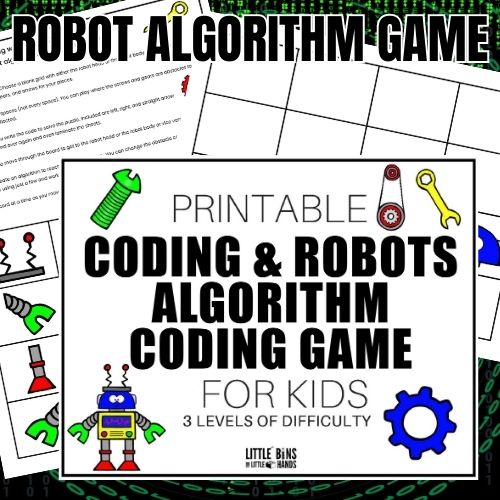
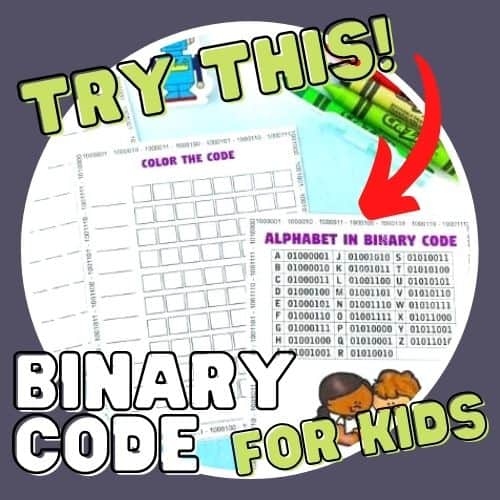
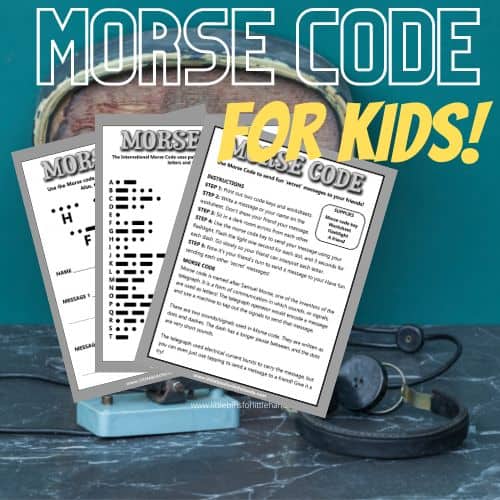
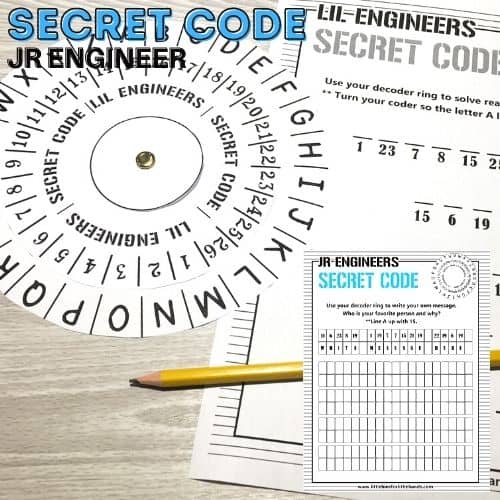
Printable Coding Activities Pack
Explore coding through easy-to-print, set-up, and do activities that don’t need a screen! This is an excellent and inexpensive way to let kids explore algorithms and binary code!
- 15+ screen-free coding activities with instructions and explanations with helpful hints and tips.
- Explore Algorithms with printable DIY games!
- Explore the Binary Alphabet with fun coding challenges.
- Go on a coding adventure with a fun story to read and a challenge to complete.
- Have fun breaking codes with our code-breaker activities!
- Solve fun riddles and addition problems using code.
- Play Robot Bingo.
Also, try Morse code, make a secret code ring, and explore binary code with Margaret Hamilton.
